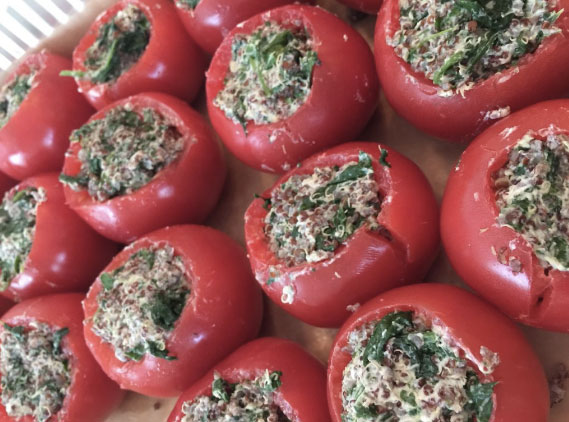Why cleanse with soup, not juices?
Juicing is a controversial subject in the nutrition world, especially since juice fasts and cleanses are currently a major dietary trend. With a juice shop on every corner, you might think that cold-pressed juices had all the answers. Advocates for juicing claim it’s a fast and convenient way to get nutrients into our bodies, while opponents argue we miss out on important health benefits from the nutrient-rich skin and fiber that is extracted during the processing. Let’s face it, cold juice that is void of fiber and protein is not a meal, so how do you have a whole day of juices and feel satisfied or nourished, especially during the cold winter months. And so soup – the ultimate comfort food – makes more sense as an alternative to juicing, especially during the colder seasons.
Soups, which I love, give you more digestible nutrients, and create more satiety – you feel nourished, and in fact you are. Soups, especially the organic and vegan soups we created for the Smart Life soup cleanse, are filled with plant-based protein, fiber, vitamins and minerals. Moreover, because soups are easy-to- digest, all the organs like the liver and kidneys are given a little time off and they can work on disposing of toxins.
While I don’t think juice is necessarily bad if enjoyed in moderation or as a supplement to your regular diet, I do believe — and doctors, nutritionists, and fitness experts agree — that soups are a better way to support the body and achieve the goals of cleansing. This is why Smart Life cleansers and I love “SOUPING”:
1. Plants are better consumed whole: Plants, especially fruits and vegetables, hold many of their nutrients in the peel, the pulp, the rind, the seeds, and the flesh and all of these go into our nourishing soups. But most important, using whole vegetables, seeds, and fruits means getting every bit of their fiber.
2. Your body loves Fiber: Fiber is essential to total health. It feeds the good bacteria in your gut, it helps balance blood sugar, it keeps cholesterol in check, and it helps you get fuller faster ad aids with weight loss. When juicing we are not including the fiber from the plants and we end up reducing most fruits and vegetables to simple sugars, which spike blood sugar levels. Plus, plant fiber is what’s going to bind to the toxins in your system and naturally pull them out of your intestinal tract and colon.
3. Your digestive system can use a break: Cleansing with soups allows you to rest your digestion while at the same time flooding your body with nutrients which help your body restore itself. If you are trying to lose weight, but your scale is stuck on a number, cleansing can help you tip the scale. The soup cleanse can help your metabolism recalibrate.
4. Warm foods help ignite your digestive fire: According to traditional Chinese Medicine and Ayurveda (Hindu medicine), warming foods like soups are more healing, nourishing, and soothing to the body. They also help ignite the digestive fire, which is at the center of your body’s ability to break down and assimilate foods and all their nutrients. Having a lot of cold foods can put out that fire and dampen your digestion as well as your energy level. During the cold season, this is especially important to support your body and stay balance with nature.

